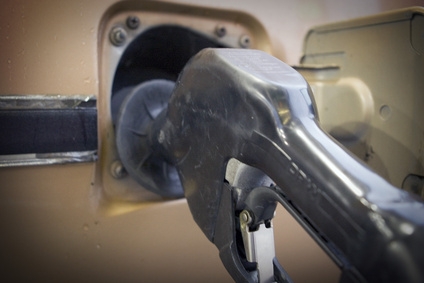
When fuel contains more than 10 percent ethanol, problems can arise in a vehicle, including engine stalling, failed starting and difficulty accelerating. It can also decrease the life of the engine. Because fuel station owners are not required to test the levels of ethanol in the fuel delivered, and car owners do not become aware of the problem until damage has been done, it is important to test the levels of ethanol in the fuel being used. With the formula D/F x 100, you can established the percentage of ethanol in a fuel sample. The amount of water to be used in testing will be identified as W. The amount of fuel to be used will be identified as F. Once mixed, the difference in volume of W will be identified as D.
Pour 25 ml of water into a 100 ml cylinder, making W = 25 ml.
Pour 75 ml of fuel sample into the same cylinder, making F = 75 ml.
Close the cylinder and shake it. Set it upright and allow the solution to settle.
The original volume of the bottom section (W) was 25 ml. Once the solution has settled, there will be an increase in the volume of W by an amount (D). To determine the value of D, subtract 25 from the new level reading of W.
To determine the percentage of ethanol in the fuel sample, divide D (volume difference in W) by F (amount of original fuel sample) and multiply by 100 (the total amount of solution in the cylinder).